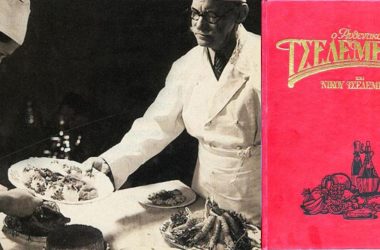Disclaimer: This article could either give you the blues or make you hungry. Proceed at your own risk!
THE ABANDONED VILLAGE OF OLD PERITHEIA
The ancient village of Palaia (Old) Peritheia is one of the few remnants from simpler times. This mountain settlement is a souvenir from a time before tourism, beaches, and sunbathing became so popular on Corfu island.
Situated below Mount Pantokrator, the village dates back to the middle of 14th century, although it is speculated that it might have been inhabited centuries before. The houses there were built entirely by hand, and it was Corfu’s wealthiest village up until the 17th century.
Nonetheless, Old Peritheia was abandoned in the 1960s as tourism started developing elsewhere. Although some of the houses have turned into ruins throughout the decades, many are now undergoing restoration due to the renowned interest in the village.

The ghost village is similar to the El Acebuchal in Málaga province, Spain. Situated in the heart of Sierras Tejeda, Almijara and Alhama Natural Park, the small village was abandoned during the time of Franco only to be completely restored 50 years later by a local family.
Palaia Perithia was not as lucky, but it does have the Ognistra taverna at its entrance just like the bar-restaurant at the entrance of the El Acebuchal village in Spain. Unlike its counterpart, however, Old Perithia continues to captivate the hearts of visitors and Corfiots alike, and it does it year after year.
But wait a second, what does Palaia Peritheia have to do with tsigareli?

WHERE DOES TSIGARELI COME IN?
Aside from the fact that you can try tsigareli at the Ognistra taverna, both Old Perithia and tsigareli were “abandoned” during the tourism rush in the 1960s through until the late 1980s.
The village was left for settlements closer to the sea as tourism there was blooming and jobs could be easily found. Similarly, Corfiots, and visitors by association, had turned their back on traditional Greek cuisine and had Westernised it so that it could suit the Western palate.
Tsigareli was no more.

THE RETURN OF TSIGARELI…
The plant-based dish is not as popular as skordalia or bianco even to this day. Yet, it remains indispensable as a symbol for the resilience of Greek cuisine and culture.
The name of the dish comes from the Greek verb “tsigarizo” (τσιγαρίζω), which means “to sauté”. Hence, the method of cooking matters just as much as the ingredients (if not even more).
Tsigareli was originally a peasant dish, and as such, there is no single correct way to prepare it. The ingredients vary from season to season, and this makes it ideal for the pitter-patter of summer rain, but it is especially suitable for the winter months.
This spicy dish is traditionally prepared with different wild greens, onions, garlic, tomato paste, olive oil, red spicy pepper (hot paprika), and an abundance of herbs. Interestingly, the “wild greens” in tsigareli are not called greens by the Greeks themselves. Rather, they are called wild cabbages or “krambi” (κραμπή).
The traditional Greek recipe is often topped with fresh dill salt and a little fresh olive oil.

HOW TO EAT TSIGARELI
Bella Vista Beach Hotel & Studio’s advice is to try tsigareli as a lovely accompaniment to shallow fried lavraki. Single variety wines such as Modern Retsina, Syrah Rosé and Agiorgitiko would make a great addition too.
If you would like to immerse yourself in the Corfiot cuisine, however, we recommend using Tsaousi, Vostilidi and Moschato of Cephalonia instead.
Καλή όρεξη (Kalí óreksi)!













